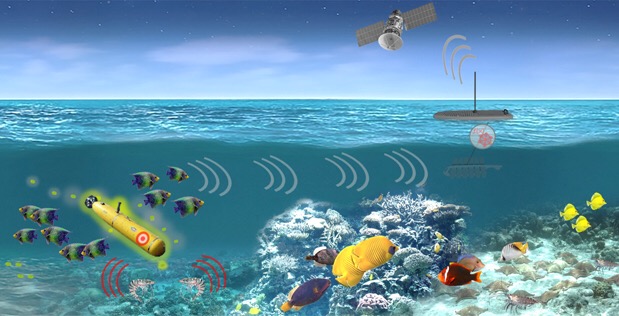
海洋探査計画:米DARPA、PALSプログラム始動 – 米国・5研究機関参加(海外各紙):
Five Teams Will Help DARPA Detect Undersea Activity by Analyzing Marine Organisms:
五个研究小组将通过分析海洋生物的行为帮助DARPA检测海底活动
米DARPA:
新たに、海洋生物学を、研究調査分野として取り入れます。
2018年2月、PALSプログラム・参加研究機関を公募で決定しました。
世界中の海洋における、各国の敵対的な行動を監視します。
Northrop Grumman Corporation,
will record and analyze acoustics from snapping shrimp and optical activity by bioluminescent organisms.
the Naval Research Laboratory,
will integrate microbial organisms into a sensing platform to detect and characterize biological signals from natural microorganisms that respond to the magnetic signatures of underwater vehicles.
Florida Atlantic University,
will record and analyze vocalization cues from goliath grouper in tropical and subtropical environments.
Raytheon BBN Technologies,
will use snapping shrimp as sources of opportunity for long-range detection, classification, and tracking of underwater vehicles.
the University of Maryland Center for Environmental Science,
will tag black sea bass with sensors to track the depth and acceleration behaviors of schools of fish that are perturbed by underwater vehicles.
DARPA is also funding the Naval Undersea Warfare Center, Division Newport,
to develop a seafloor system that uses a hydrophone array and acoustic vector sensor to continuously monitor ambient biological sound in a reef environment for anomalies.